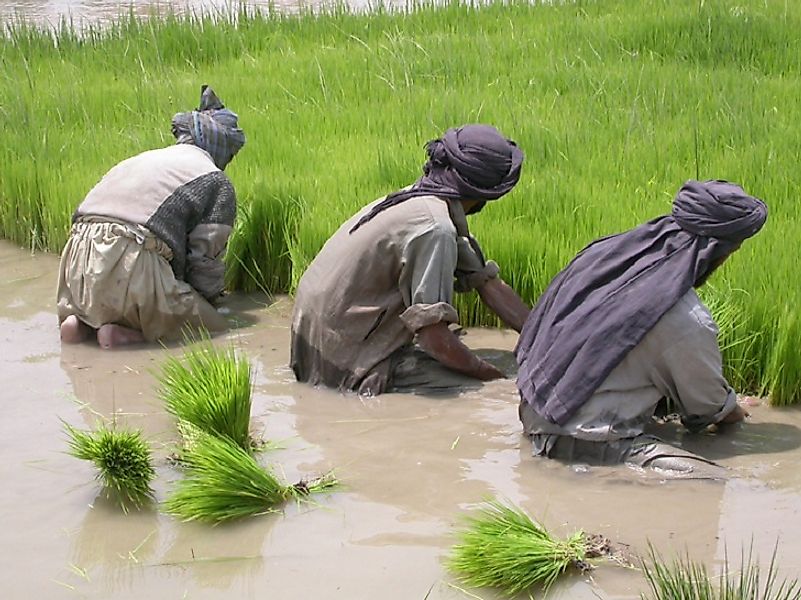Countries Where Water Is Most Often Used At The Residential Level

In underdeveloped countries, where much of the economy is subsistence farming and cottage industry, domestic water use accounts for the largest volume of total water withdrawals. As opposed to industrial and commercial agricultural purposes, most of the water utilized in these countries is used at the domestic level. These countries end up only using a fraction of their water resources because production is on a small scale. Some of those countries where water is mainly used at the residential level are discussed below.
Somalia
99% of water withdrawals are used at the domestic level in Somalia. Approximately 65% of Somalia’s population live in its rural areas. The population in the countryside is distributed in settlements and villages near water resources to practice agriculture for consumption. Crops produced on a small scale in Somalia include maize (grain corn) and fruit trees. Political instability in Somalia has discouraged large-scale industrialization and in its place, cottage industries have thrived. These cottage industries include textiles, handicrafts, and processing of meat. These small, informal production units are distributed across the country and use large volumes of water for their water-intensive processes.
Afghanistan
99% of water withdrawals in Afghanistan are used at the domestic level. Afghanistan’s economy relies on agriculture. However, decades of war have led to small-scale agricultural production. The farming mostly takes place in the rural areas where nearly 80% of Afghanistan’s population is located. This small scale farming is carried out without effective planning, in part because farmers are not exposed to any training. The farming results in usage of large amounts of water which would otherwise be reduced by effective irrigation. The bulk of the cottage industry is made up of the cotton textile small scale production. Embroidery, weaving, and pottery, which are water-intensive industries, have also been booming in Afghanistan.
Nepal
98% of water in Nepal is used at the residential level. Nepal is an under-developed country characterized by a low capacity to sustain large scale industries. The cottage industry thrives in Nepal because of low capital and availability of raw materials especially water. Such cottage industries include textiles, handicrafts, paper, and carpet production. Nepal is an agricultural nation and has an extensive arable land. Most rural citizens of Nepal are smallholder farmers, and the farm produce are for consumption. Aquaculture is also practiced in Nepal where large amounts of water are used to sustain the practice.
Mali
98% of water in Mali is used at the residential level. Mali is an African country with a booming cottage industry. Weaving, pottery, and textiles are made in small margins for the domestic market with a small portion of the products finding its way to international markets. Women in Mali also make shea butter for use in the cosmetic industry. The cottage industry is a significant consumer of water resources which are spread all over the country. A substantial population of Mali is involved in subsistence agriculture, mostly inhabitants of the rural areas. Small-scale farming is especially prolific in Mali for products such as sorghum, rice, and corn (maize). Water from the Niger River is extensively used for cultivation where it is averted into irrigation channels.
Small-Scale Industry and Subsistence Farming a Common Theme
Other countries where most of the water is used at a residential level include Madagascar, where such use accounts for 98% of the total usage nationally, followed by Swaziland (97%), Sudan (96%), Vietnam (95%), Eritrea (95%), and Guyana (94%). Small scale farming and cottage industries employ many people and sustain the often fragile economies of these countries. Changing climatic conditions are however affecting water resources in some of these countries. Ineffective planning of water use in small scale farming and cottage industries has led to wastage of water which would otherwise be conserved.
Countries Where Water Is Most Often Used At The Residential Level
| Rank | Country | % of Water Withdrawals Used at the Domestic Level |
|---|---|---|
| 1 | Somalia | 99% |
| 2 | Afghanistan | 99% |
| 3 | Nepal | 98% |
| 4 | Mali | 98% |
| 5 | Madagascar | 98% |
| 6 | Swaziland | 97% |
| 7 | Sudan | 96% |
| 8 | Vietnam | 95% |
| 9 | Eritrea | 95% |
| 10 | Guyana | 94% |







